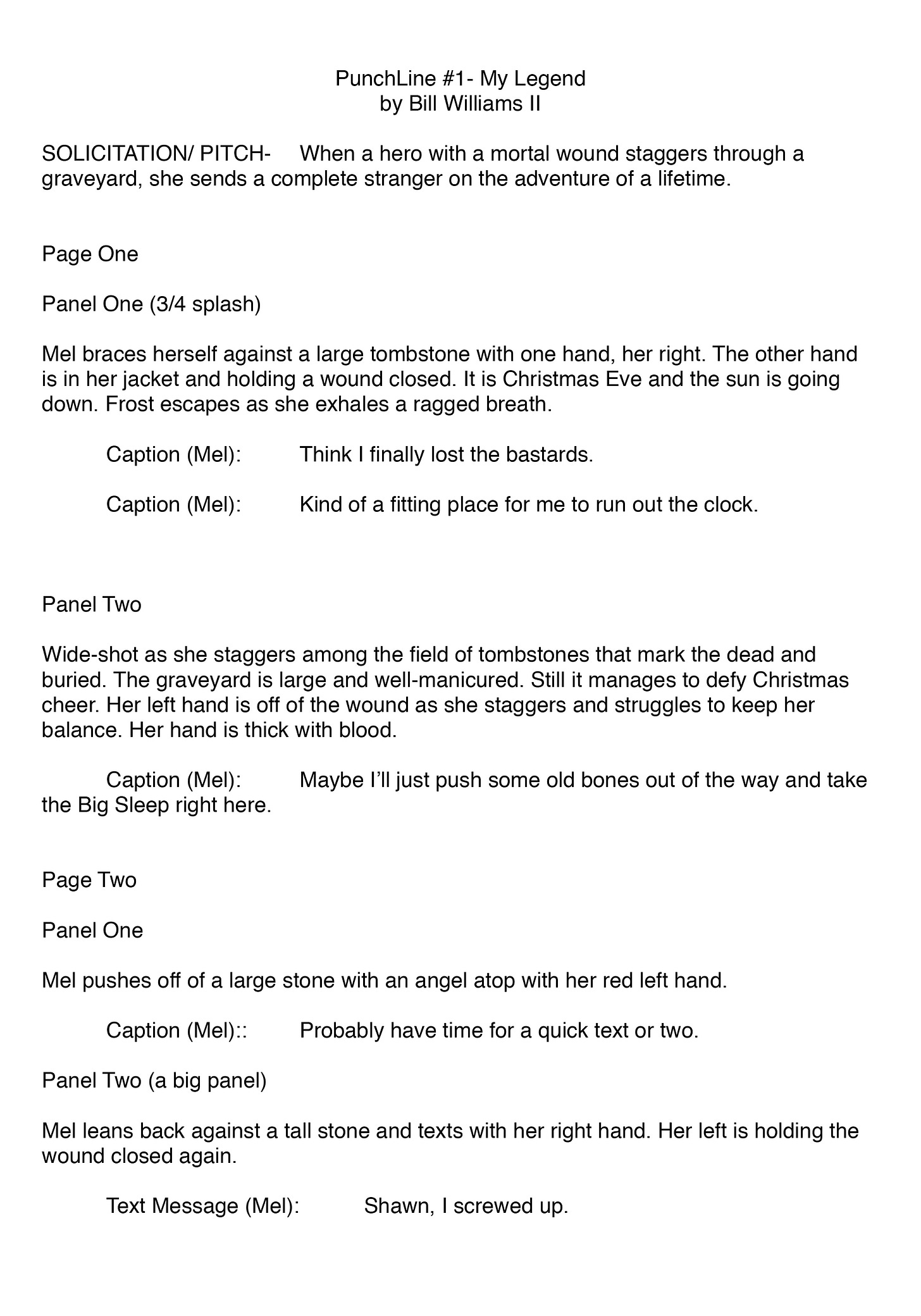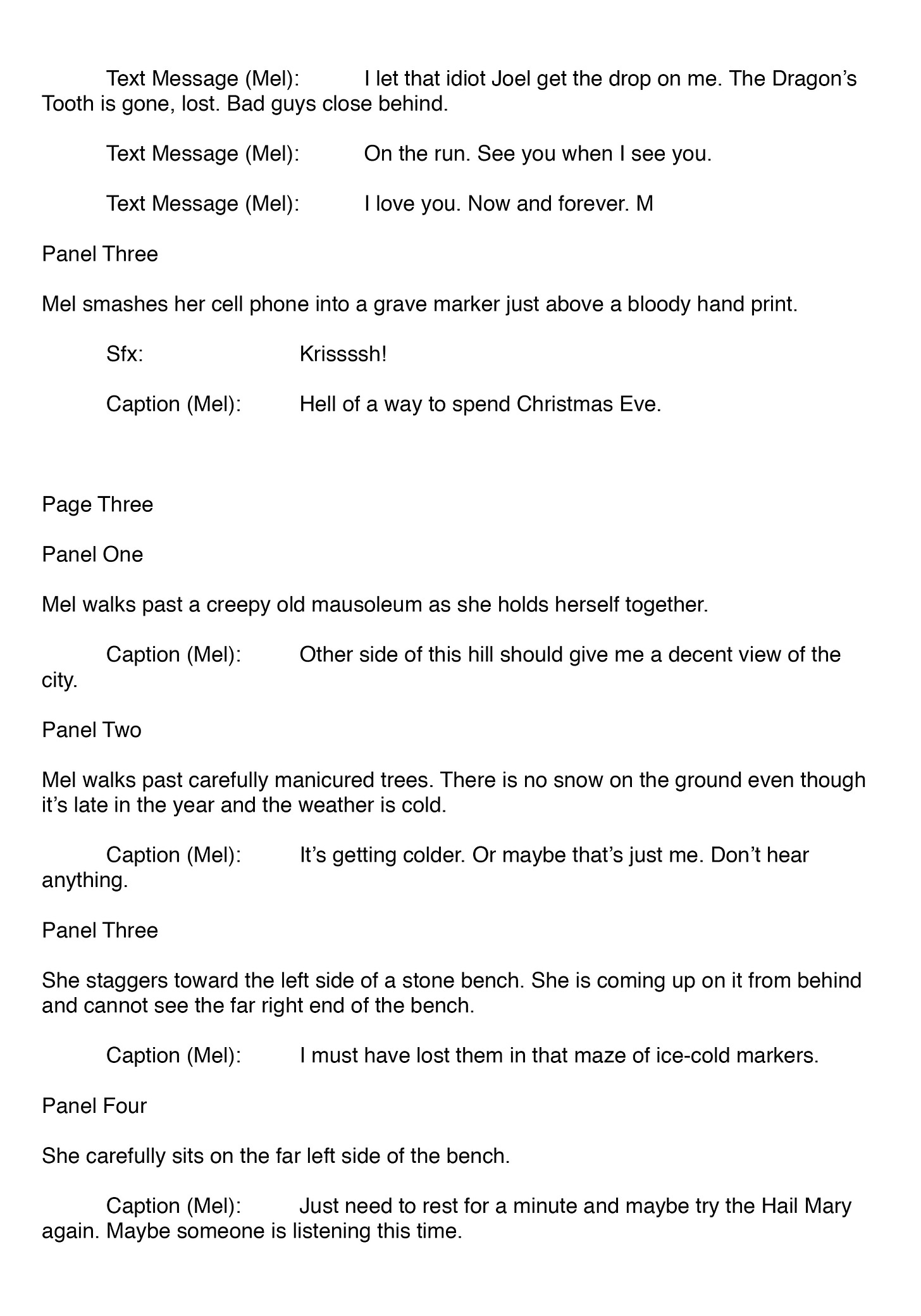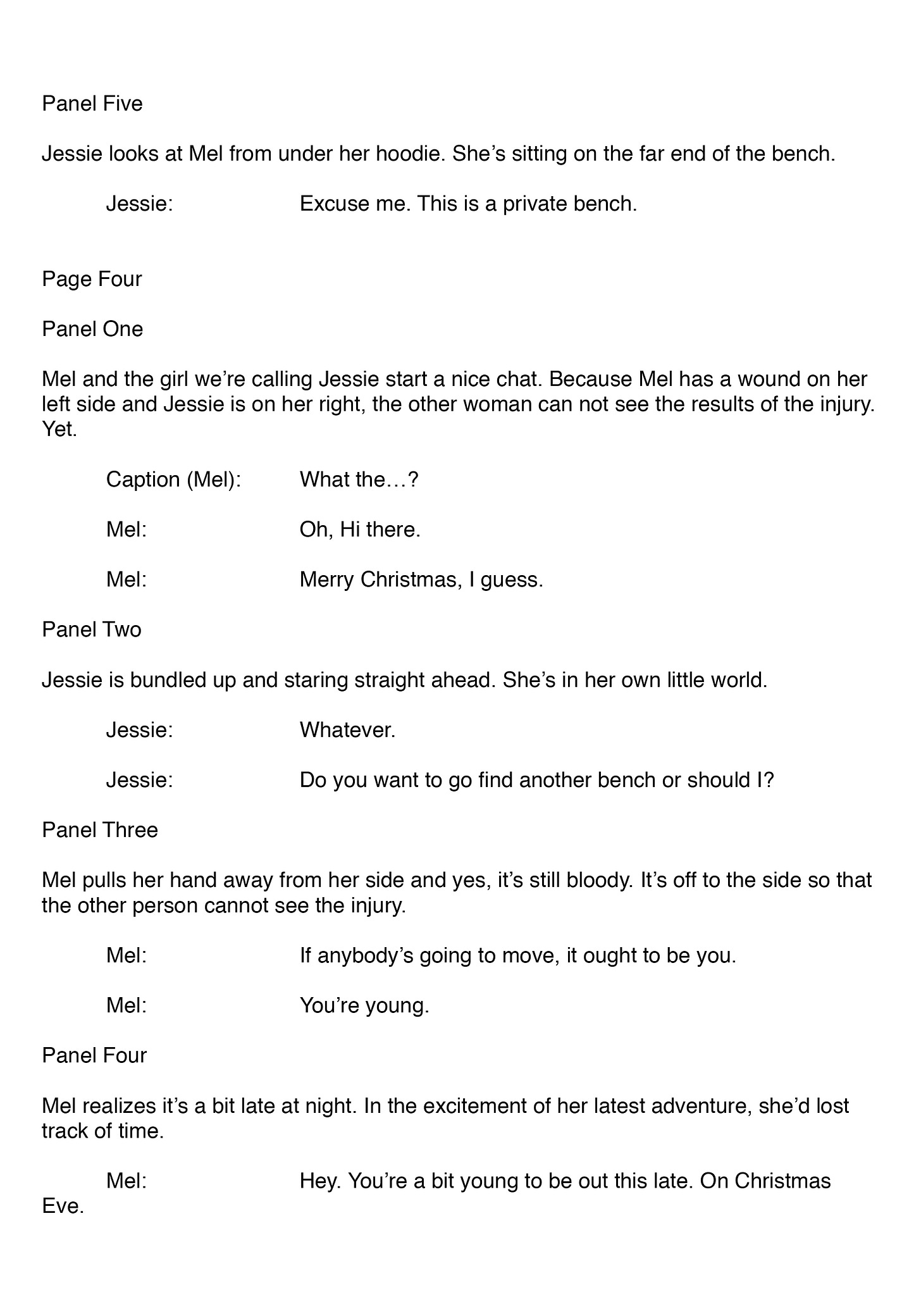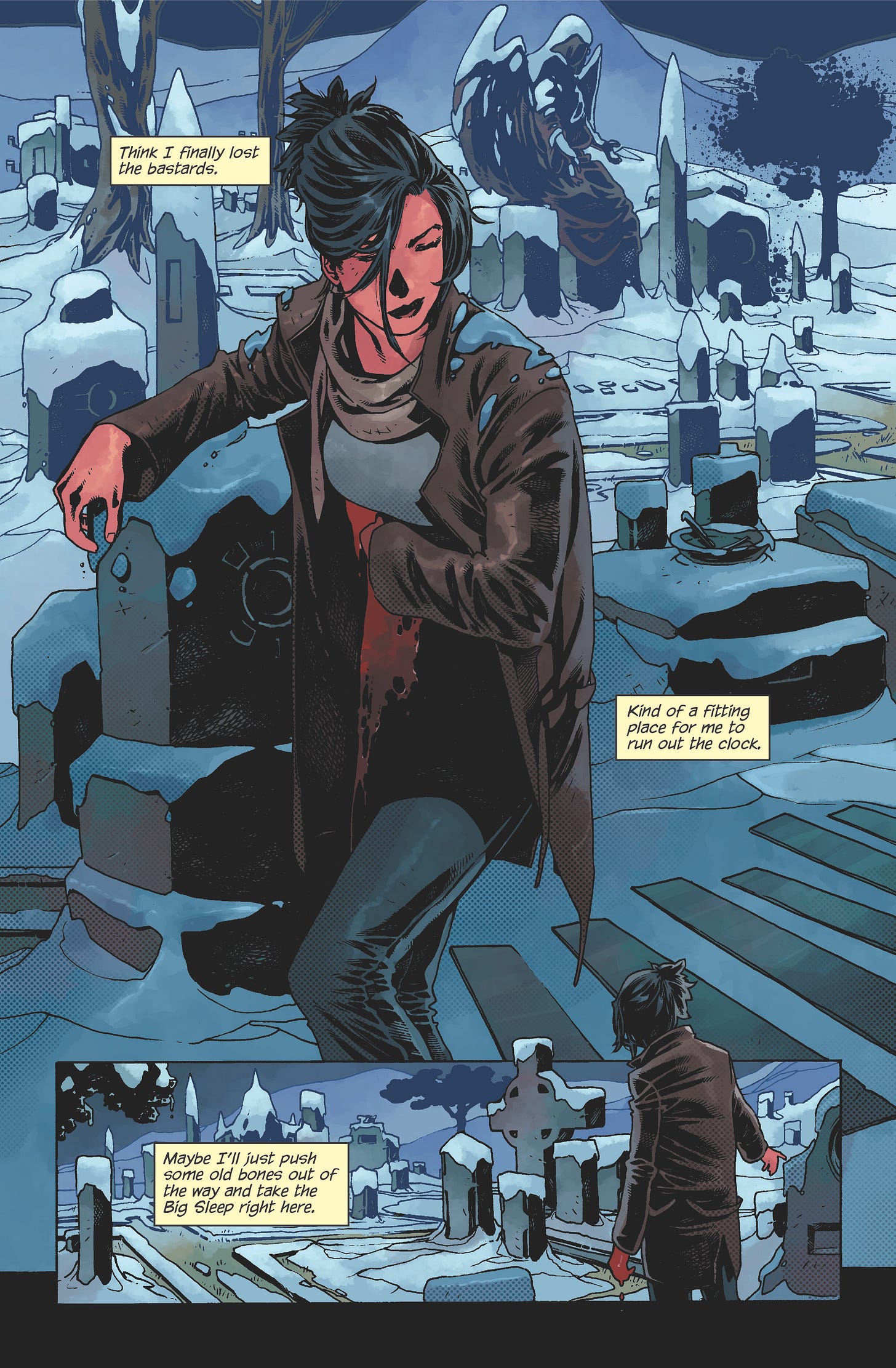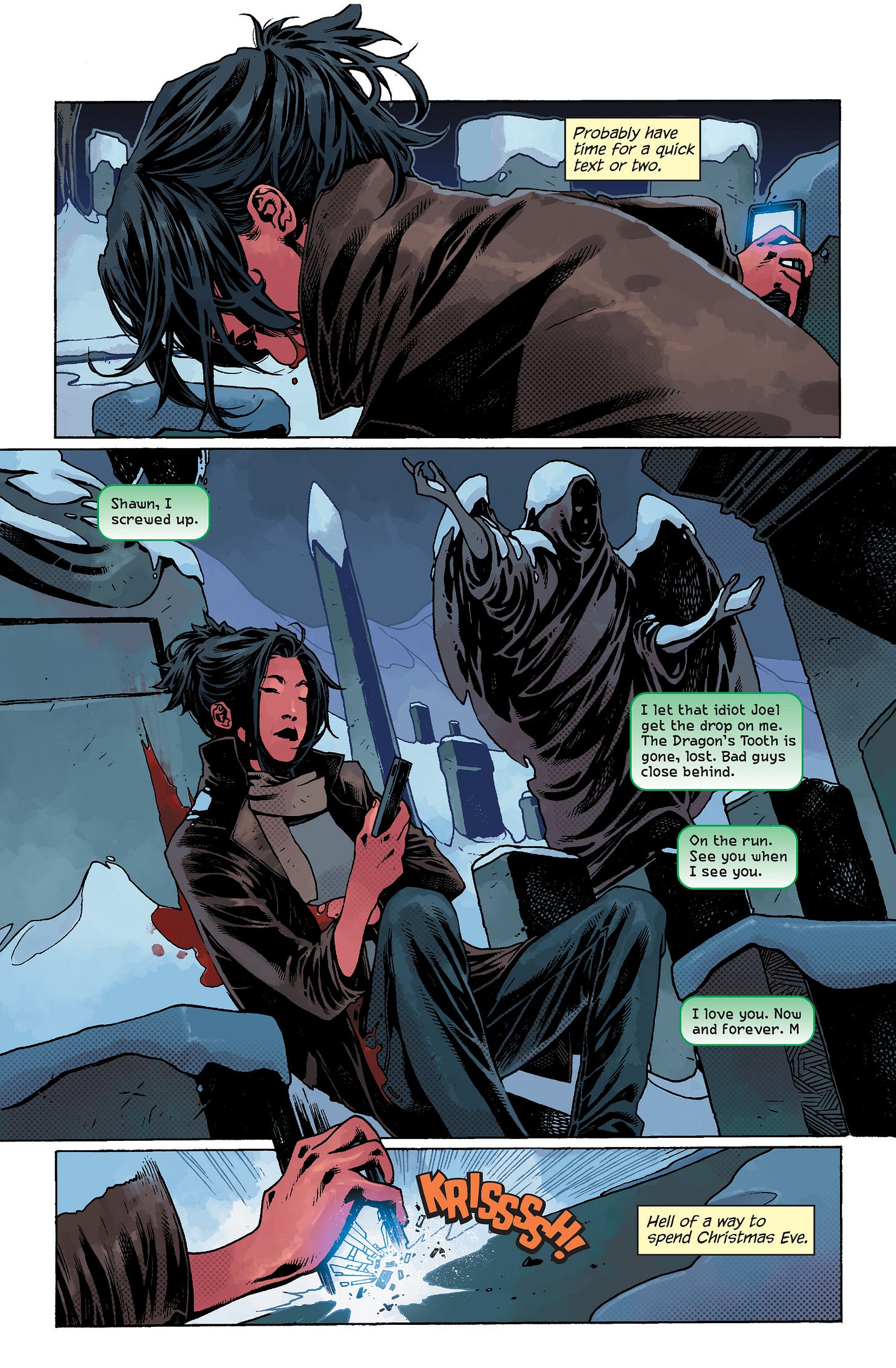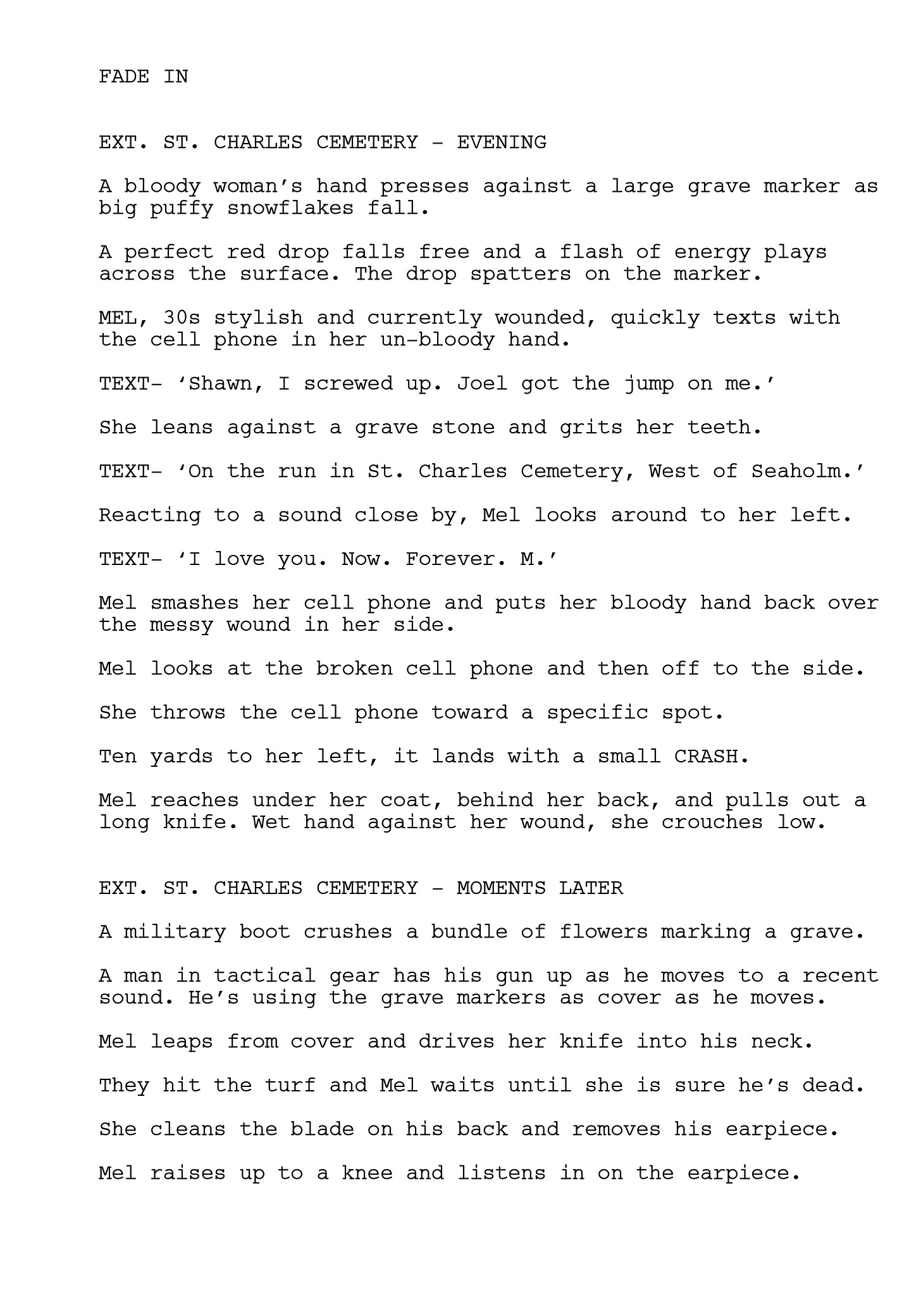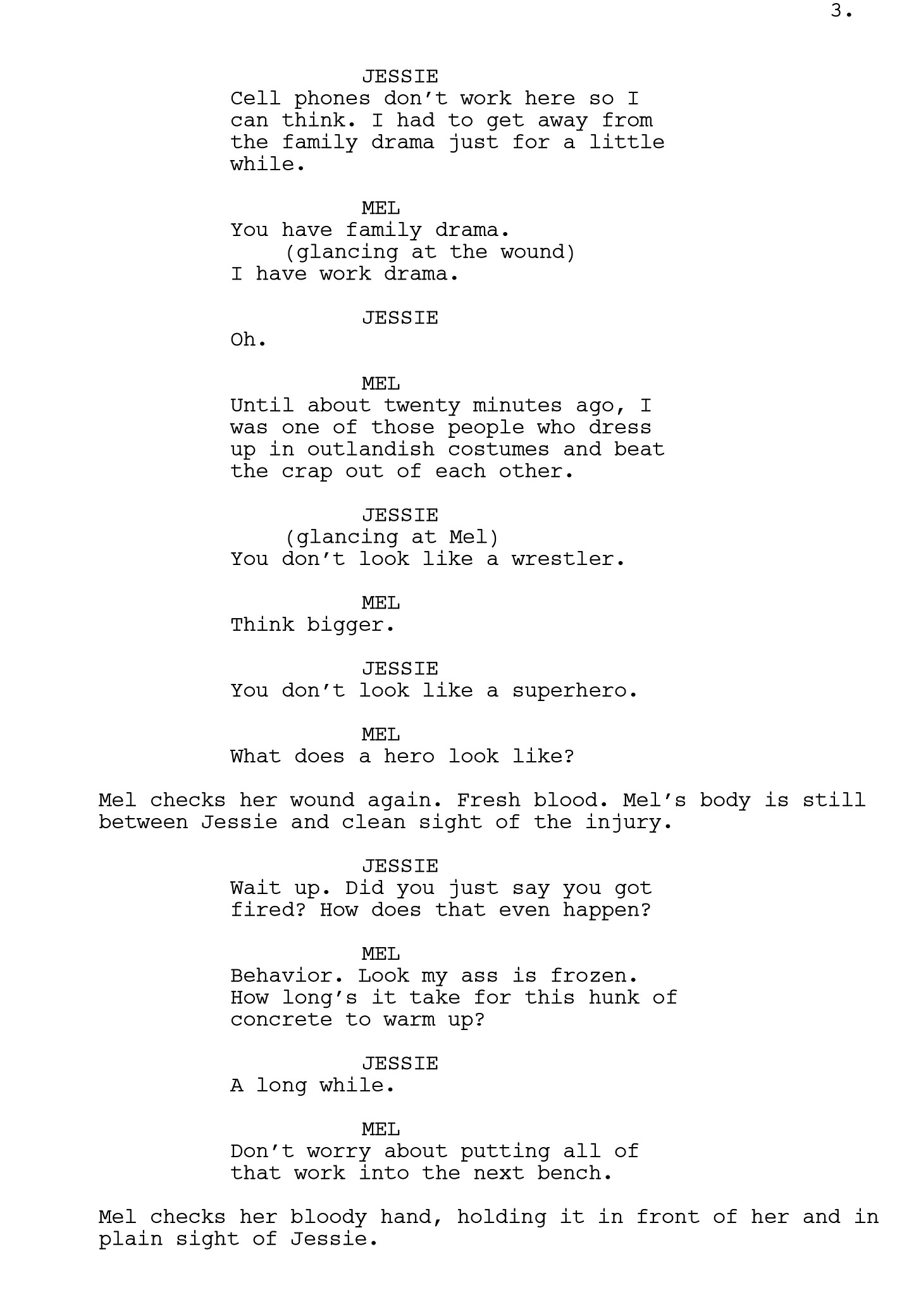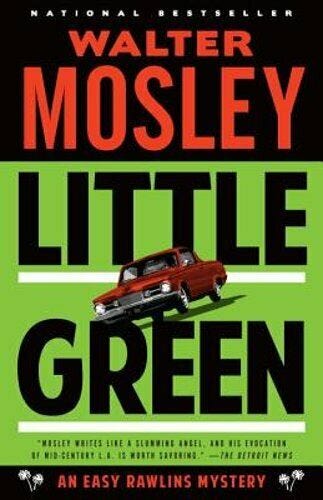The stories told in comic books and on the screen may all have the same roots at the moment, but the format for presenting them is very different. Comics book stories are told with frozen moments in time that have the illusion of movement thanks to the time jumps that happen in the space in between the panels. Motion pictures have actual motion to carry the story.
The approach to writing the scripts for those media are by the requirements of the process, very different. The artists that come along to adapt a script for the comic book page need a different structure to the story than a screenplay.
Here are the first few script pages from my script for the first issue of Punchline. Notice that the panels, the moments for the art team to render are pinned in place like a butterfly in a collection.
And now a couple of the pages of art from that comic by Matthew Weldon (line art), Neeraj Menon (color) and Thom Zahler (letters).
My script for a filmed adaptation of the same scene should look very different in terms of format. Actors can move and inhabit an environment, bringing the story to life in a vastly different way.
In this telling of the story, the drama starts at the same place but with a bit more action which raises the stakes. More showing and less telling. I did tweak the dialogue a little while I was at it. I wrote the first draft of the comic script 5 (!) years ago.
There it is, a tale of two formats, one for comics and one the screen.
I also finished reading an awesome book this week.
LITTLE GREEN (2013)
(Easy Rawlins #12)
by Walter Mosley
In 2007s Blonde Faith, Easy Rawlins drove off a cliff in what might have been his last living moment. After time in a light coma, he awakens and begins his rehabilitation as he searches for a teenager lost in a 1960’s psychedelic underground. His return is tinged with mysticism as Easy struggles to return to his former life.
As a detective story, Easy’s search through the drug culture and the various criminal factions makes a first rate and compelling story. This portrait of Los Angeles and the black experience and the racial overtones of the day feel lived in and relevant today.
The Easy Rawlins mysteries are a must read for mystery fans in part because they feature one of the most entertaining supporting characters in fiction, the charming Ray Alexander, also known as Mouse.
The audio version of this novel is read by Michael Boatman, but ‘read’ is not the best word for what the actor brings to the text. Boatman shines as he delivers a performance that displays a wide range of characters.
Highly recommended.


